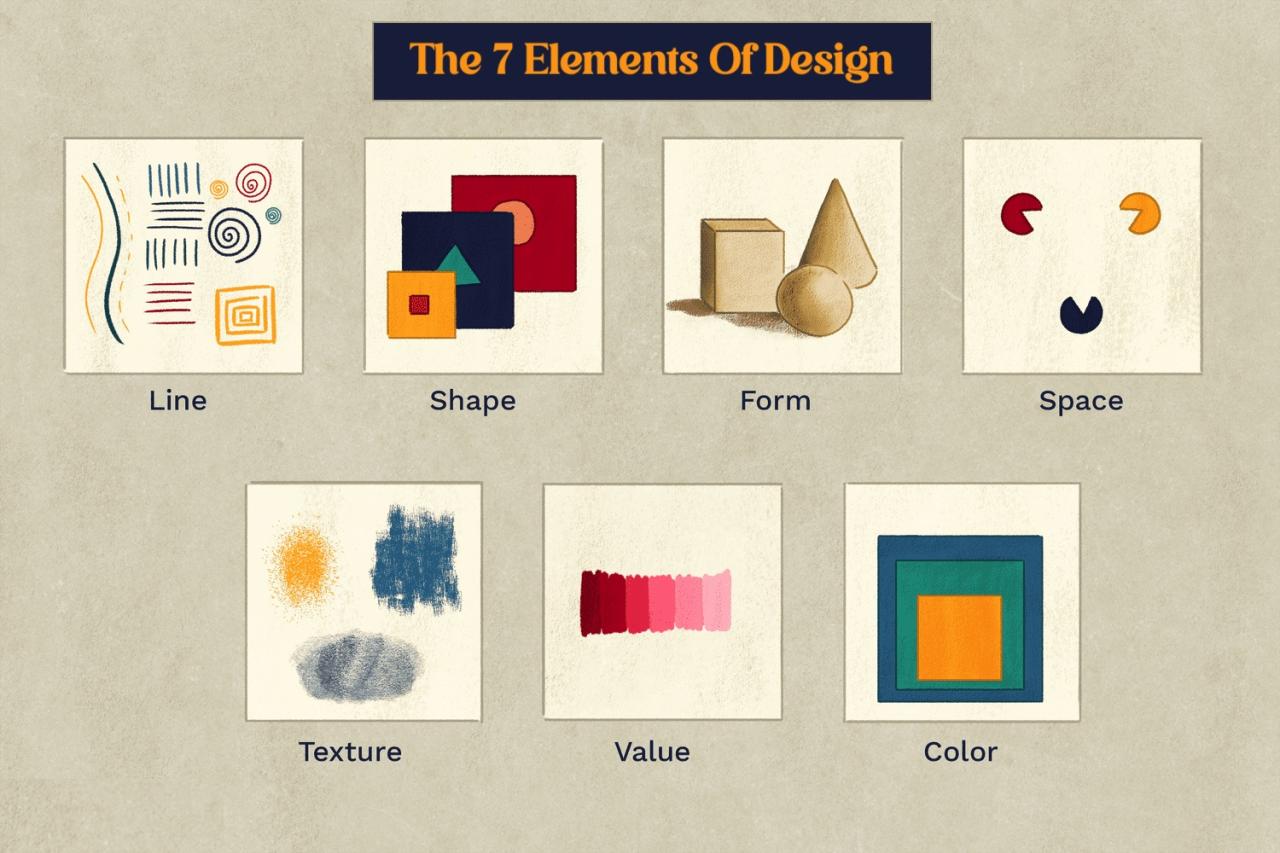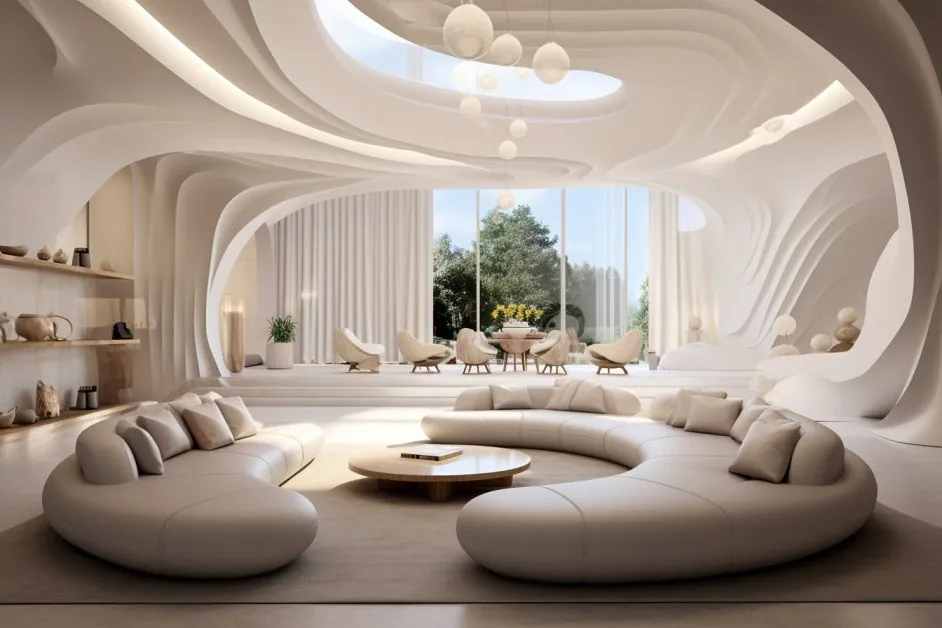Aquascaping, the art of arranging aquatic landscapes within an aquarium, offers a captivating way to transform a simple container into a miniature ecosystem. This comprehensive guide will take you through the process of designing your own stunning aquarium aquascape, from initial planning to ongoing maintenance. We’ll explore various styles, essential materials, and crucial considerations to create a thriving and visually appealing underwater world.
This guide covers everything from choosing the right tank size and substrate to selecting appropriate plants, rocks, and wood. You’ll learn how to create balanced and harmonious aquascapes, regardless of your chosen style. We’ll also discuss the importance of lighting, water parameters, and regular maintenance to ensure a healthy and thriving environment for your aquatic inhabitants.
Introduction to Aquascaping

Aquascaping, the art of arranging aquatic plants and hardscape elements within an aquarium, has evolved significantly over the years. From its humble beginnings as a hobby, it has blossomed into a complex and engaging pursuit, drawing inspiration from various natural landscapes and artistic styles. The goal is not merely to create a visually appealing environment, but also to cultivate a thriving ecosystem that provides a healthy habitat for aquatic life.The roots of aquascaping can be traced back to the early days of aquarium keeping, when enthusiasts began experimenting with different plant arrangements and rock formations.
Over time, the techniques and aesthetic ideals have shifted, leading to the diverse styles prevalent today. This evolution is fueled by the ongoing exchange of knowledge and inspiration among aquascapers globally, with new ideas constantly emerging. Aquascaping is a dynamic field, constantly evolving with the creativity of its practitioners.
Core Principles of Aquascaping
Aquascaping is fundamentally about creating a balanced and harmonious environment. This balance extends beyond the visual appeal to encompass the biological needs of the aquatic inhabitants. The core principles revolve around the integration of hardscape, plants, and water elements to create a miniature ecosystem. This holistic approach ensures that the chosen elements complement each other, supporting the thriving life within the aquarium.
Different Styles of Aquascaping
Aquascaping encompasses various styles, each characterized by distinct aesthetic preferences and design approaches. These styles offer a diverse range of visual possibilities, allowing aquascapers to express their creativity and individual tastes. The most prominent styles include Iwagumi, Dutch, and nature aquascaping.
Comparison of Aquascaping Styles
| Style | Distinguishing Features | Focus | Typical Elements |
|---|---|---|---|
| Iwagumi | Focuses on minimalist rock arrangements, emphasizing natural, uncluttered lines. The hardscape, typically consisting of smooth river stones and rocks, is meticulously positioned to create a natural, Japanese-inspired aesthetic. | Creating a tranquil and harmonious space, mimicking natural mountain landscapes. | Smooth river stones, carefully placed rocks, minimal plant life. |
| Dutch | Emphasizes dense, vibrant plant growth, often featuring a wide array of aquatic plants meticulously arranged in intricate patterns and textures. The plants are frequently arranged in geometric or symmetrical patterns. | Creating a lush, botanical display with a high density of plants. | A wide variety of aquatic plants, carefully cultivated and arranged in intricate patterns, dense plant cover, clear water. |
| Nature Aquascaping | Aims to recreate a natural, undisturbed aquatic landscape. This style utilizes a wider variety of hardscape elements, including driftwood, rocks, and wood, to mimic a natural riverbed or pond environment. Plants are integrated organically into the scene. | Mimicking a natural water body, focusing on the overall impression of a natural environment. | Driftwood, rocks, various aquatic plants, water features such as waterfalls or streams (if appropriate), natural-looking hardscape. |
Planning and Design

Careful planning and design are fundamental to achieving a thriving and aesthetically pleasing aquarium. A well-considered layout ensures the health and happiness of your aquatic inhabitants, maximizes the visual appeal of your aquascape, and minimizes potential problems. A thoughtful approach avoids costly mistakes and allows for the gradual refinement of your aquascape over time.Effective planning transcends simply arranging rocks and plants.
It encompasses a holistic understanding of the interplay between the physical elements, the biological needs of the inhabitants, and the desired aesthetic. This comprehensive approach leads to a more harmonious and visually captivating aquarium environment.
Tank Size and Type Selection
Choosing the right tank size and type is crucial. A properly sized tank allows for the appropriate amount of water volume for the species you intend to house. Too small a tank can lead to stress and disease in fish and other inhabitants. Conversely, an overly large tank can be challenging to maintain, especially for beginners. Consider the space available and the specific needs of the aquatic life you plan to keep.
Researching the typical space requirements for each species is essential for a successful setup. For example, a small community tank may require 20-30 gallons, while a larger tank accommodating more diverse and active species could necessitate 55 gallons or more. The tank’s shape (long, tall, or wide) also influences the aesthetic possibilities and the arrangement of elements.
Plant, Rock, and Decorative Element Selection
Selecting appropriate plants, rocks, and decorative elements is critical to the visual appeal and overall health of the aquarium. Different styles of aquascapes call for various types of plants and decor. For example, a naturalistic aquascape might use a mix of submerged and emergent plants, while a minimalist style might focus on a few carefully chosen plants and rocks.
Prioritize plants that are compatible with the water parameters you intend to maintain and the fish species you’ve selected. Research plant species for their specific growth rates and light requirements. Rocks should be durable, non-toxic, and aesthetically pleasing. Consider the texture, color, and size of the rocks to achieve the desired look. Artificial decorations should be made of non-toxic materials.
Aquascaping Materials
| Material | Characteristics | Considerations |
|---|---|---|
| Live Plants | Provide oxygen, shelter, and visual interest. Varying growth rates, light needs, and sizes are essential to consider. | Research specific plant requirements, compatibility with intended fish, and proper lighting. |
| Rocks | Provide structure, visual interest, and hiding places. Durability, non-toxicity, and aesthetic appeal are key. | Ensure rocks are free of harmful substances and appropriate for the tank environment. |
| Sand/Substrate | Provides a base for plants and creates visual interest. Different textures and colors can influence the overall aesthetic. | Select a substrate that is appropriate for the type of plants and fish you plan to keep. |
| Driftwood | Provides visual interest, hiding places, and unique textures. Natural forms and durability are desirable qualities. | Ensure driftwood is properly cleaned and free of harmful substances. |
| Artificial Decorations | Adds visual interest and structure. Non-toxic materials are essential for aquatic life. | Verify that decorations are made of safe, inert materials. |
Layout Design Factors
Designing a compelling layout requires careful consideration of various factors. The size and shape of the tank, the species of fish and plants, and the desired aesthetic all play a role. Consider the visual balance of elements and how they interact to create a cohesive and harmonious design. A well-structured layout should be functional for the inhabitants, allowing them adequate space for swimming, feeding, and resting.
The layout should also maximize the use of the available space to create a visually engaging and satisfying aquascape. Also, consider the flow of water and how it will interact with the decorations.
Substrate Selection and Preparation
Selecting and preparing the substrate is a crucial step in aquascaping. The substrate forms the base of the aquarium and significantly impacts the overall health, aesthetics, and plant growth. Careful consideration of substrate type, depth, and preparation ensures a thriving environment for both aquatic plants and the fish.The choice of substrate greatly influences the visual appeal and functionality of the aquascape.
Different substrates offer various benefits, such as improved water filtration, nutrient retention, and enhanced aesthetic qualities. Proper preparation is key to maintaining a healthy and balanced ecosystem within the aquarium.
Substrate Types and Properties
Various substrates are available, each with unique characteristics. Gravel, sand, and soil-based mixes are common choices. Gravel, often in different sizes and colors, provides a classic look and is generally inert, meaning it does not significantly affect water parameters. Sand, available in various textures and colors, offers a more natural aesthetic. Soil-based mixes, while providing essential nutrients for plants, require careful management to avoid water contamination.
The selection should align with the intended aquascape style and the types of plants to be cultivated.
Substrate Preparation for Planting
Thorough preparation of the substrate is vital for successful plant growth. Cleaning the substrate is essential to remove any dust, debris, or contaminants. This step ensures that the substrate does not introduce harmful substances into the aquarium water. Washing the substrate with clean water until the water runs clear is a recommended practice.
Substrate Depth and its Impact
The depth of the substrate significantly impacts the aquascape. A deeper substrate bed provides more space for root development and nutrient retention for plants. Deeper substrates also offer better hiding places for fish, and can help to buffer water parameters. A deeper substrate can create more complex and visually interesting aquascapes. For example, a deep substrate is more suitable for robust plants with extensive root systems, while a shallow substrate may suffice for smaller, more delicate plants.
The depth should be carefully considered in relation to the intended plant life and the overall design.
Substrate Combinations for Different Aquascaping Styles
Combining substrates can create unique visual effects. For example, a layered substrate with a darker substrate at the bottom and a lighter substrate on top can mimic natural landscapes. Alternatively, a substrate gradient can be created by using different textures or colors. Such combinations offer more design flexibility, enhancing the aquascape’s visual appeal. Consider the natural look of the intended environment when deciding on substrate combinations.
For a densely planted jungle-style tank, a soil-based mix with a layer of gravel on top can provide a natural look.
Layering Substrates for Visual Effects
Layering substrates is a technique to achieve specific visual effects. For instance, layering different shades of gravel can create a gradient effect, simulating natural terrain. Using contrasting substrates, such as sand and gravel, can accentuate specific areas of the aquascape. Layering substrates in a way that aligns with the intended design allows for creating diverse and visually appealing aquascapes.
Plant Selection and Placement
Selecting and strategically placing plants is crucial to the aesthetic appeal and overall health of an aquarium. Proper plant selection not only enhances the visual appeal but also contributes to the ecological balance of the aquatic environment. Careful consideration of plant characteristics and their compatibility with the chosen aquascape style is vital for success.
Aquatic Plant Species and Growth Characteristics
A wide variety of aquatic plants are suitable for aquascaping, each with unique growth patterns and characteristics. These plants can be broadly categorized based on their growth habits, including fast-growing, medium-growing, and slow-growing varieties. Fast-growing plants can quickly fill out spaces, while slow-growing plants add a sense of maturity and elegance. Understanding these growth patterns is essential for planning the aquascape layout and maintaining a healthy balance.
Consider the desired density and overall look of the aquascape when choosing plants.
Plant Selection Based on Aquascape Style
The chosen aquascape style significantly influences plant selection. For instance, a minimalist design might feature a few carefully chosen, slow-growing plants, while a dense jungle-style layout would benefit from a variety of fast-growing plants. Matching the plant characteristics to the specific design elements of the aquascape is key to achieving the desired aesthetic. Careful consideration of the overall visual effect and plant placement will create a cohesive and appealing aquascape.
Planting and Maintenance Techniques
Proper planting techniques are essential for successful aquascaping. The selection of suitable planting mediums, such as gravel or soil, can influence the plant’s ability to establish strong roots and thrive. Ensure the plants are securely placed in the substrate, with sufficient space between them to allow for growth and prevent overcrowding. Regular maintenance, including pruning and removing dead or decaying plant matter, is crucial for maintaining the health and aesthetic appeal of the aquascape.
Consistent monitoring of plant health is key to a thriving aquarium.
Arrangement and Placement Techniques
Strategic arrangement of plants is crucial for creating depth and visual interest within the aquascape. Consider using varying heights and textures to add dimension. Planting plants in different layers can create a more complex and engaging visual effect. Utilizing the natural flow of the water, and carefully considering the placement of plants to avoid blocking light or creating stagnant water areas, can enhance the natural beauty of the aquascape.
Table of Aquatic Plant Lighting Requirements
This table provides a general overview of lighting requirements for various aquatic plant types. These requirements can vary depending on the specific species and growing conditions. Adjustments may be necessary to achieve optimal growth.
| Plant Type | Lighting Requirements |
|---|---|
| Anubias | Low to medium light |
| Java Fern | Low to medium light |
| Amazon Sword | Medium to high light |
| Dwarf Sagittaria | Medium light |
| Water Sprite | Medium light |
| Cabomba | Medium to high light |
Rock and Wood Placement

Crafting an aesthetically pleasing and functional aquascape hinges significantly on the strategic placement of rocks and wood. These elements provide structure, visual interest, and often, the foundation for the entire design. Choosing the right materials and arranging them thoughtfully can transform a simple aquarium into a captivating miniature ecosystem.Careful consideration of rock and wood types, sizes, and shapes is crucial to achieve the desired visual effect.
The natural forms and textures of these elements contribute to the overall appeal and realism of the aquascape. Understanding the nuances of arrangement and the potential impact of different materials will elevate the aquascape from a mere container of water to a captivating display.
Rock Selection and Characteristics
Rocks, in various shapes, sizes, and colors, play a vital role in defining the aquascape’s overall aesthetic. Selecting appropriate rocks is essential to create a cohesive and visually appealing design. Natural rocks, with their unique textures and colors, often enhance the visual appeal of the aquarium.
- Boulder-like rocks: These large, imposing rocks often serve as focal points, anchoring the design and creating a sense of depth. They offer a sturdy base for smaller rocks and plants, and their size can create a dramatic impact. Examples include large, flat slabs that can be used to define a landscape feature, or jagged, mountainous shapes.
- Medium-sized rocks: These rocks are ideal for building layers and adding complexity to the aquascape. Their size allows for greater flexibility in placement, and they can be used to create varied textures and visual interest. They are excellent for creating pathways or dividing areas within the aquascape.
- Small rocks: These can be used for filling gaps, creating subtle details, or forming the base layer of the aquascape. They contribute to the overall texture and can be used to accentuate the other elements, such as plants.
- Color and Texture: The color and texture of rocks should complement the overall design and the chosen plants. For example, dark, basalt-like rocks can create a dramatic backdrop, while light-colored limestone rocks can add a sense of openness. Consider how the texture of the rocks (smooth, rough, pitted) will interact with the other materials and create a specific mood.
Wood Selection and Characteristics
Incorporating wood adds a natural, organic element to the aquascape, often mimicking the beauty of natural rivers or forests. Choosing the right type of wood is essential to achieve the desired aesthetic and ensure its compatibility with the aquarium environment.
- Driftwood: Driftwood, with its weathered appearance and natural curves, is a popular choice for aquascapes. Its unique shapes and textures add visual interest and depth to the display. The varying shades of brown, grey, and even hints of other colors often blend seamlessly with the other components of the aquascape.
- Branch Pieces: Smaller branches offer a variety of textures and can be used for creating structure or accents within the design. They can be arranged to mimic natural foliage, or to add detail to the overall design. Consider the different angles and shapes that the branches can take to add character.
- Root Systems: These provide a natural, complex structure for the aquascape. They often have intricate patterns and curves, which can be used to enhance the natural feel. Their natural shape and form are key to achieving a realistic and engaging aquascape.
- Color and Texture: Wood, like rocks, should be selected to complement the overall design. The varying shades of brown and grey in driftwood offer a wide range of possibilities. Consider the natural patterns and textures of the wood, as these will contribute significantly to the visual appeal of the aquascape.
Arrangement Techniques
Proper arrangement is vital to creating a visually appealing and balanced aquascape. Strategic placement of rocks and wood helps to define spaces, add depth, and enhance the overall design.
- Creating Layers: Arranging rocks and wood in layers helps to create depth and dimension. Larger rocks often form the base, with progressively smaller rocks layered on top. Wood pieces can be positioned to complement the rock layers, adding height and dimension.
- Creating Flow: Mimicking natural water flow is important for a convincing aquascape. Rocks and wood can be positioned to suggest current patterns or water features. This adds realism and visual interest.
- Focal Points: Identify a focal point for the aquascape. Large, dramatic rocks or interesting wood pieces can serve as focal points, drawing the eye and establishing the center of interest.
Lighting and Water Parameters

Proper lighting and water parameters are crucial for the success of any aquascape. These factors directly influence plant growth, fish health, and the overall aesthetic appeal of the aquarium. Careful consideration of these aspects ensures a thriving and visually captivating underwater environment.
Importance of Lighting in Aquascaping
Adequate lighting is essential for stimulating healthy plant growth in an aquarium. Plants, like all photosynthetic organisms, require light to convert nutrients into energy. The intensity, duration, and spectrum of light significantly impact the rate of photosynthesis, affecting the vibrancy of colors, the size, and the overall health of aquatic plants. Insufficient lighting can result in stunted growth, pale coloration, and potentially, plant death.
Conversely, excessive lighting can lead to algae blooms and negatively impact the aesthetic appeal and overall health of the aquarium.
Choosing the Appropriate Lighting for Different Plant Types
Different aquatic plants have varying light requirements. High-light plants, such as Java ferns and Anubias, thrive in bright, well-lit conditions. Medium-light plants, such as Vallisneria and Cryptocoryne, require moderate light intensity. Low-light plants, like moss and certain species of Amazon swords, can tolerate lower light levels. Understanding these differences is critical for selecting the appropriate lighting setup to support the specific plant species in the aquascape.
A spectrum of light that mimics natural sunlight can be beneficial for the most plants.
Maintaining Proper Water Parameters for a Healthy Aquascape
Maintaining ideal water parameters is crucial for the well-being of both plants and fish in an aquarium. This encompasses a range of factors, including temperature, pH, ammonia, nitrite, nitrate, and general hardness. Fluctuations in these parameters can cause stress and illness in both plants and fish, hindering the growth and health of the aquascape. Regular monitoring and adjustments are necessary to maintain a stable and healthy environment.
Importance of Water Chemistry in Maintaining the Health of Plants and Fish
Water chemistry plays a vital role in the overall health of the aquarium ecosystem. The pH level of the water directly affects the availability of nutrients for plants and the physiological processes of fish. Ammonia and nitrite, if present in elevated levels, can be toxic to both fish and plants. Maintaining appropriate levels of these elements is crucial for preventing illness and death.
Nitrate levels should also be managed to prevent excessive buildup and potential harm to the inhabitants. Proper water testing is essential to monitor and adjust these parameters for optimal health.
Different Lighting Setups for Various Aquascape Styles and Plant Types
Various lighting setups are suitable for different aquascape styles and plant types. A low-tech setup might utilize a single, moderate-wattage fluorescent light, sufficient for low-light plants. A medium-tech setup often involves multiple fluorescent or LED lights, offering a higher light intensity for medium-light plants. A high-tech setup might incorporate multiple high-intensity LED lights, providing sufficient light for high-light plants.
These different setups cater to the diverse needs of various plant species and maintain the aesthetic appeal of the aquascape. The wattage, color temperature, and placement of lights are essential considerations when selecting a lighting setup for a particular aquarium.
Maintaining the Aquascape
Maintaining a thriving aquascape requires consistent effort and attention to detail. A healthy and visually appealing aquarium is a result of diligent upkeep and proactive management of various factors, including water parameters, plant health, and the removal of unwanted elements. Neglecting maintenance can quickly lead to issues like algae blooms, decaying plant matter, and an unpleasant aesthetic.Regular maintenance tasks are crucial for sustaining the beauty and health of your aquascape.
These tasks, performed consistently, ensure the environment remains optimal for your aquatic plants and inhabitants. Proactive maintenance also prevents potential problems from escalating, saving time and resources in the long run.
Importance of Regular Water Changes
Regular water changes are essential for maintaining water quality and removing accumulated waste products. These waste products, produced by fish and decaying matter, can accumulate over time, depleting essential nutrients and introducing harmful toxins into the water column. Consistent water changes help to replenish these nutrients and maintain the ideal balance. Furthermore, water changes dilute these toxins and prevent them from reaching harmful levels.
Cleaning and Debris Removal
Regularly removing debris and dead plant matter is critical for maintaining water clarity and preventing the proliferation of bacteria and algae. The accumulation of debris can lead to cloudy water, negatively affecting the aesthetics of your aquascape and the well-being of your fish. Cleaning and debris removal also helps to prevent the build-up of harmful substances that can negatively impact water quality and plant health.
- Removing Debris: Use a siphon to carefully remove excess debris from the substrate and the water column. Ensure not to disturb the plants or the decorative elements excessively. Avoid using harsh chemicals or scrubbing tools that could damage the delicate ecosystem.
- Removing Dead Plant Matter: Regularly trim or remove dead or decaying plant leaves and stems to prevent the spread of bacteria and maintain the overall aesthetic of the aquascape. This step also helps maintain the nutrient balance in the water and prevents the build-up of organic matter.
Preventing Algae Growth
Algae growth can quickly overwhelm an aquascape, obscuring the beauty of your plants and decorations. Several factors contribute to algae proliferation, including excessive light exposure, nutrient imbalances, and insufficient water changes. A balanced approach involving regular maintenance, proper lighting, and careful nutrient management is essential to control algae growth effectively.
- Controlling Light Exposure: Adjust the lighting schedule to minimize the duration of high-intensity lighting. This can significantly reduce the likelihood of excessive algae growth. Excessive light can stimulate rapid algae growth, so adjust the lighting duration as needed to maintain the optimal balance.
- Maintaining Water Parameters: Regular testing of water parameters, including ammonia, nitrite, nitrate, and pH, is essential to maintain a healthy environment and prevent algae blooms. Monitoring these parameters helps to identify and address potential issues promptly, minimizing the risk of algae outbreaks.
Maintaining Water Quality
Maintaining optimal water quality is fundamental to the health of your aquascape. Regular water changes, alongside the proper use of filtration systems, are crucial to sustaining a healthy environment. These actions help to remove excess waste and maintain the ideal chemical balance in the water, ensuring the well-being of your plants and aquatic inhabitants.
- Regular Water Changes: A consistent schedule of water changes, typically 25-50% every 1-2 weeks, is highly recommended to maintain optimal water quality. This helps to remove accumulated waste products and replenish essential minerals, preventing the buildup of toxins and maintaining a balanced environment.
- Using Filtration Systems: Effective filtration systems play a vital role in maintaining water quality. Properly functioning filters remove debris, waste, and other contaminants from the water, promoting a clean and healthy environment for your aquascape.
Regular Maintenance Schedule
A consistent maintenance schedule helps maintain the health and beauty of your aquascape. The frequency of tasks may vary based on the size of the aquarium, the number of inhabitants, and the specific needs of your plants.
| Task | Frequency |
|---|---|
| Water Changes | 25-50% every 1-2 weeks |
| Debris Removal | Daily or every other day |
| Plant Trimming | Weekly or bi-weekly |
| Filter Maintenance | Weekly or bi-weekly, depending on filter type |
| Water Parameter Testing | Weekly |
Troubleshooting Common Issues
Maintaining a thriving aquascape requires proactive problem-solving. Understanding common issues and their causes is crucial for successful aquarium upkeep. Early detection and appropriate intervention often prevent minor problems from escalating into major crises. This section will detail common pitfalls and offer practical solutions to ensure a healthy and aesthetically pleasing aquatic environment.
Algae Blooms
Algae blooms are a prevalent issue in aquariums. Excessive algae growth can quickly disrupt the aesthetic appeal and potentially harm the inhabitants. Understanding the root causes is essential to effective management.
- Nutrient Imbalance: High levels of nitrates, phosphates, and ammonia can fuel algae growth. Regular water changes, appropriate fertilization schedules, and efficient filtration are crucial to maintaining a balanced nutrient profile. For instance, overfeeding fish can contribute to excess ammonia and nitrate levels, triggering algae outbreaks. Monitoring water parameters and adjusting feeding routines are preventative measures.
- Insufficient Lighting: Insufficient or inappropriate lighting can sometimes cause algae to overgrow. Adjusting the lighting schedule and intensity can be beneficial. Consider the type of plants and the fish present when selecting the appropriate lighting. An inadequate spectrum or duration of light can also contribute.
- Poor Water Circulation: Stagnant water can promote algae growth. Ensuring adequate water circulation and filtration is essential to maintain a healthy water column. Sufficient water flow prevents nutrient buildup and aids in the removal of debris.
- Overfeeding: Excess uneaten food decomposes, releasing nutrients that encourage algae growth. Monitoring feeding habits and adjusting portions to minimize waste are crucial.
Plant Diseases
Plant diseases can affect the overall health of the aquascape. Early diagnosis and appropriate treatment are essential for preventing the spread of diseases.
- Identifying the Problem: Recognizing the signs of disease, such as discoloration, wilting, or lesions, is the first step in treatment. Careful observation of plant health is important. Differentiating between disease and normal growth stages is essential for effective treatment. For example, brown spots on leaves might indicate fungal infections, while yellowing could be a sign of nutrient deficiencies or disease.
- Addressing the Root Cause: The cause of plant diseases may be water quality issues, pest infestations, or infections. Addressing these root causes is crucial for long-term plant health. For instance, poor water parameters or insufficient CO2 levels can weaken plants, making them susceptible to diseases.
- Implementing Treatment: Treatments vary based on the specific disease. Removing affected plants and adjusting water parameters can help. Using appropriate medication or altering the lighting conditions are also beneficial. It is crucial to consult reliable sources for guidance on treating specific diseases.
Fish Health Issues
Fish health is integral to a thriving aquascape. Recognizing and addressing health problems is crucial for maintaining a healthy ecosystem.
- Symptoms and Diagnosis: Identifying symptoms, such as lethargy, loss of appetite, or unusual fin or scale damage, is crucial for early intervention. Monitoring fish behavior and physical condition are key steps.
- Water Quality Parameters: Maintaining appropriate water parameters, including temperature, pH, and ammonia levels, is crucial for fish health. Regular testing is necessary to ensure that water quality is within the recommended range.
- Quarantine and Treatment: Isolating sick fish is essential to prevent the spread of diseases. Administering appropriate medication and monitoring the fish’s response is critical.
Closing Notes

In conclusion, designing a captivating aquarium aquascape involves a blend of artistic vision and practical knowledge. This guide has provided a roadmap for creating a thriving and aesthetically pleasing underwater world. By carefully considering the steps Artikeld here, you can transform your aquarium into a unique and mesmerizing piece of art. From planning and substrate selection to lighting and maintenance, we’ve covered all the key elements for success.
Remember, patience and attention to detail are key to achieving a stunning aquascape.